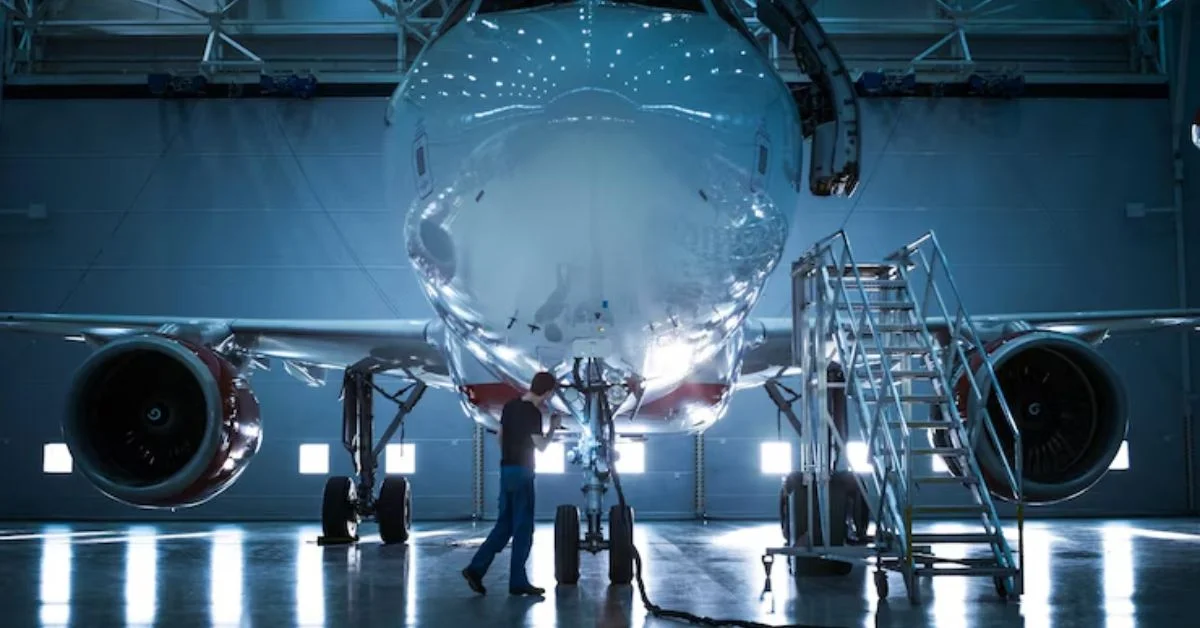In the modern aerospace industry, where precision, safety, and innovation are paramount, the materials that bind, coat, and protect aircraft components are as critical as the engines that power them. Among the companies leading the charge in advanced aerospace materials is Henkel, a century-old enterprise that has strategically positioned itself at the intersection of chemistry and aerospace engineering. The Henkel Aerospace Guide is more than a catalog of solutions—it is a window into the technological evolution of flight.
From adhesives that withstand extreme temperatures to surface treatments that resist corrosion for decades, Henkel Aerospace’s aerospace portfolio is integral to manufacturing and maintaining today’s most advanced air and space vehicles.
A Brief Overview of Henkel in Aerospace
Henkel Aerospace, headquartered in Düsseldorf, Germany, is globally known for brands like Loctite, Bonderite, and Teroson. While many associate the company with consumer adhesives and household brands, Henkel has, for decades, served as a silent force in industrial innovation. Its aerospace division supports original equipment manufacturers (OEMs), maintenance, repair, and overhaul (MRO) operations, and Tier 1 suppliers across commercial aviation, defense, and even space exploration.
The Henkel Aerospace Guide encapsulates years of expertise, regulatory alignment, and deep R&D to assist engineers, procurement specialists, and project managers in selecting the right materials for mission-critical applications.
Adhesive Technologies: The Backbone of Modern Aerospace Assembly
Aircraft today are not just metal shells but composite-structured marvels. Bonding technology is no longer supplementary—it’s foundational. Henkel’s aerospace-grade adhesives are engineered to offer:
- High strength-to-weight ratios
- Resistance to temperature extremes
- Durability under mechanical stress and vibration
- Compatibility with composite and dissimilar substrates
Types of Henkel Aerospace Adhesives:
- Structural Film Adhesives – Pre-formed film adhesives used in composite bonding for fuselage sections and wing structures.
- Paste Adhesives – For metal-to-metal and composite-to-metal bonding in both OEM and MRO applications.
- Core Splice Adhesives – Lightweight bonding solutions for honeycomb structures in floors, bulkheads, and flaps.
These adhesives are often tailored to meet aerospace standards such as MIL-SPEC, ASTM, and OEM-specific requirements, and are qualified by Boeing, Airbus, Lockheed Martin, and others.
Surface Treatment Systems: Protecting the Skin of Flight
Beyond bonding, protection against corrosion, wear, and environmental exposure is vital. Henkel Aerospace’s surface treatment solutions prepare and condition metal and composite surfaces for optimal coating adhesion and long-term performance.
Core Products Include:
- Bonderite M-CR: Chromate and non-chromate conversion coatings for aluminum components.
- Alodine 1200: A widely used pre-paint conversion coating.
- Etchants and Deoxidizers: Chemical treatments that clean and prepare surfaces for bonding or coating.
These surface treatments not only enhance the adhesion of paints and adhesives but also extend the fatigue life of critical components.
Composite Technologies: Meeting the Demands of Lightweighting
Weight reduction is central to fuel efficiency and emission reduction. Henkel Aerospace supports this with materials that facilitate the use of composites in structural and interior components.
Notable Composite Solutions:
- Prepreg-compatible bonding films
- Thermally conductive adhesives
- Epoxy syntactic foams for void filling and reinforcement
Through its work in this domain, Henkel Aerospace enables aerospace manufacturers to create lighter, stronger aircraft without compromising safety or durability.
Sealants and Potting Compounds: The Unsung Heroes
Sealants play a key role in pressurized cabins, fuel tanks, and environmental enclosures. Henkel’s aerospace sealants are developed to ensure:
- Resistance to aviation fuels and hydraulic fluids
- Elasticity over wide temperature ranges
- Long working times for large assemblies
Similarly, potting compounds are used to protect sensitive electronic components from shock, vibration, and moisture. Henkel Aerospace’s epoxy and silicone-based solutions are selected for avionics, sensor housings, and LED systems.
MRO: Supporting the Full Lifecycle of Aerospace Systems
Aircraft lifespans often exceed 25 years, and maintenance is a constant concern. Henkel Aerospace’s MRO products align with FAA, EASA, and military regulations to provide reliable materials for repairs, upgrades, and corrosion protection.
Applications Include:
- Wing and fuselage repair adhesives
- Sealant reapplication kits
- Corrosion-inhibiting surface treatments
- Lubricants for actuators and landing gear assemblies
These offerings are backed by technical documentation and on-site support services, helping maintenance crews work efficiently and in compliance.
Sustainability and Environmental Compliance
With aerospace facing mounting pressure to reduce environmental impact, Henkel is advancing green chemistry and sustainability in multiple ways:
- Chromate-free coatings to replace toxic hexavalent chromium
- Solvent-free adhesives for safer factory environments
- Recyclable packaging and bulk delivery systems
Henkel’s aerospace guide incorporates these priorities into product design, enabling OEMs to meet both performance and sustainability benchmarks.
Digital Tools and Technical Support
Henkel has also embraced digital transformation, integrating engineering software and online platforms to assist with:
- Product selection based on aircraft type and environment
- Custom datasheet generation
- Performance simulation and validation
Its digital Aerospace Technical Resource Center allows engineers to access safety data sheets (SDS), certificates of analysis (COA), and application tutorials 24/7.
Certification and Regulatory Landscape
Aerospace materials are among the most regulated in any industry. Henkel’s products undergo rigorous qualification to meet:
- AS9100 and ISO 9001 standards
- OEM-specific requirements (e.g., D6-5616 for Boeing, Airbus AIPS)
- MIL-STD and SAE AMS specifications
By maintaining extensive regulatory documentation and engaging directly with aerospace authorities, Henkel ensures its materials are consistently airworthy.
Innovation Partnerships and Future Roadmap
Henkel collaborates with research institutions and industry consortia to push the boundaries of aerospace materials science. Current research areas include:
- Self-healing adhesives for next-gen aircraft
- Nanocomposite coatings for improved heat resistance
- Smart sealants embedded with diagnostic sensors
These innovations are part of Henkel’s long-term vision for adaptive materials that respond to environmental stimuli, structural loads, or damage events.
Case Studies: Henkel in Action
1. Advanced Bonding in Military Aircraft
Henkel partnered with a U.S. defense contractor to replace riveted joints with structural adhesives in a next-gen fighter jet. Result: reduced weight, faster assembly, and lower radar signature.
2. Corrosion Protection in Tropical Climates
An airline in Southeast Asia faced rapid corrosion in its fleet. Henkel introduced Bonderite surface treatments, extending part life by 40% in high-humidity conditions.
3. Spacecraft Adhesive Qualification
Henkel adhesives were used in satellite components exposed to vacuum and radiation. After accelerated aging tests, the materials showed zero delamination.
Training and Knowledge Transfer
Henkel doesn’t just sell products—it builds capabilities. The company offers:
- On-site training for assembly and MRO technicians
- Certification courses in surface treatment and bonding
- Webinars on regulatory updates and innovation trends
These programs are tailored for engineers, production leads, and quality assurance professionals who must stay current in a fast-evolving industry.
Final Thoughts: Why Henkel Aerospace Matters
The Henkel Aerospace Guide is not just a portfolio—it is a strategic blueprint for material engineering in aviation. As aircraft become lighter, faster, and more intelligent, the demands on the materials that bind them together grow exponentially.
Henkel meets this challenge with a combination of scientific rigor, regulatory alignment, and an unwavering focus on performance. Whether in the hangar or the lab, in orbit or in the stratosphere, Henkel’s aerospace solutions help ensure that the future of flight is not only possible—but sustainable, safe, and scalable.
For more information, click here.









